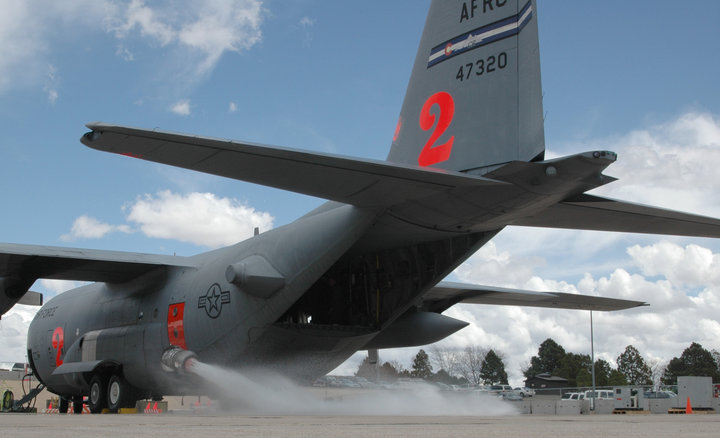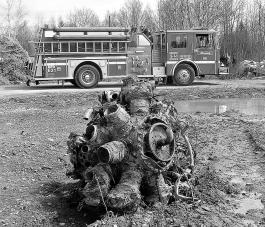A watchdog group of the North Carolina General Assembly, the Program Evaluation Division, has recommended that the Division of Forest Resources eliminate 20 of the 38 aircraft that they use for the management of wildland and prescribed fires. The report also recommends that of the other 34 aircraft owned by the state, that 5 of them be eliminated.
Here are the recommendations about the fire-related aircraft from the 89-page report, which also covers the management of other state-owned aircraft.
| Function | Currently | Eliminate | Remaining |
| Fire Control (3 single-engine fixed wing, and 3 Bell UH1H helicopters) | 6 | 2 | 4 |
| Fire Patrol (single-engine fixed wing) | 18 | 11 | 7 |
| Suppression (air tankers, 1 CL215 & 4 SEATs) | 5 | 1 | 4 |
| Suppression/Rx burn | 2 | 1 | 1 |
| Transport | 3 | 1 | 2 |
| Salvage/parts | 4 | 4 | 0 |
| TOTALS | 38 | 20 | 18 |
The Canadair CL215 air tanker has been grounded since 2008 because it needs a 5,000-hour inspection that is expected to cost $1 million. The Forest Resources staff expects that the inspection would reveal repairs that would cost an additional $500,000 to $1,000,000. The agency does not have the money for the inspection and repairs, or a pilot for the aircraft.
The other four air tankers are Single Engine Air Tankers (SEATs). Three are Melex M18A’s, and one is a Rockwell S2R.

The report says, about the Division of Forest Resources’ aviation program:
According to Division of Forest Resources staff, the division has the second largest aviation fleet for forest protection in the country. However, the state is ninth in acres of forest land and experienced fewer acres of forest fires over the last three years than 16 other states. Other states use their National Guard, private companies, and resources from other states arranged through interstate compacts to fight fires.
The Division of Forest Resources, in an official response to the report, said in part:
Nationally, North Carolina ranked third, fifth, and fourth in 2007, 2008, and 2009 respectively, for the most number of wildfires in a state…. The average fire size for the 3-year time period was the third best (meaning smallest) for states that had 3,000 or more fires for each of the three years.
…
A better measure of efficiency for a wildland fire fighting aviation fleet may be to look at cost per number of fires, cost per average fire size, cost per homes protected, etc.
Senate Majority leader Martin Nesbitt is not convinced that the recommendations in the report should be followed, saying:
Thank God we don’t have forest fires all the time, but it’s kind of like if you did a study of the efficiency of fire trucks you’d find out that they’re terribly inefficient. They sit in the firehouse most of the time but they are there when you need them.
The Division of Forest Resources has commissioned a separate study of their fire aviation program which should be completed by Conklin and de Decker by August 1, 2010. The Division asks that the General Assembly not make any decisions about reducing their fleet until that second study is complete.




